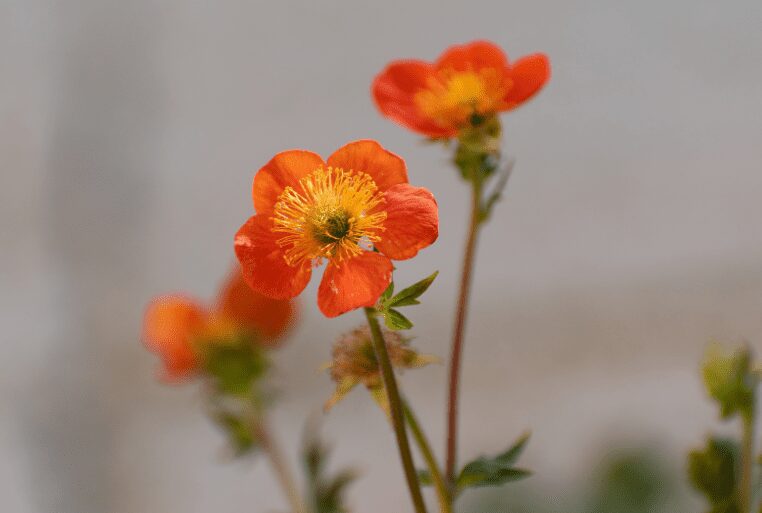
Avens, often known as geum, is a genus containing over fifty perennial flowering plants belonging to the rose family (Rosaceae).
Most of the species grow in either the northern or southern temperate zones or the Arctic, and several of them are grown for the colorful flowers they produce, which can be white, red, orange, or yellow.
Avens rarely reach a height of more than 60 centimeters (two feet). They have leaves near the base of the complex or deeply lobed plant. Solitary or forming small clusters, the blooms have five petals and typically measure between 2 and 3 centimeters (about 1 inch) in diameter.
Three kinds of evergreen shrubs belong to the genus Dryas, the mountain avens. In contrast to the five petals characteristic of flowers in this family, the blossoms of these species each have eight individual petals.
Combinations with vibrant colors
The wispy stems and small blooms of avens will make them look like miniature roses in a casual, color-filled garden.
You can plant it alongside other cottage-garden favorites, including foxglove, dianthus, hollyhock, hydrangea, daisies, heuchera, dame’s rocket, and delphinium.
Its airy flowering stems also complement rock gardens, where the quick-draining soil suits the plant’s preferences.
If placed in random spots, this spring-flowering perennial makes a bold show of color.
Avens Care Must-Knows
Rich, well-drained soil is best for growing avens. The soil can become soggy in winter, which can be fatal. Improve the drainage of a soggy site before planting, or plant this perennial in a raised-bed garden.
In hot summer climates, give it afternoon shade. Avoid planting it south of Zone 7 because of the intense heat and humidity of the Deep South.
A robust root system can be developed by planting avens produced in a nursery or transplanting existing avens in the spring.
Be sure to water the plants consistently throughout the first growing season. To encourage continued robust growth, divide your plants in the spring once every two years.
One single, three-year-old clump will not be able to develop and thrive as well as the divisions. Pinch off spent flowers as frequently as possible to stimulate reblooming, but you might consider permitting a couple to mature into lovely fluffy seed heads.






















